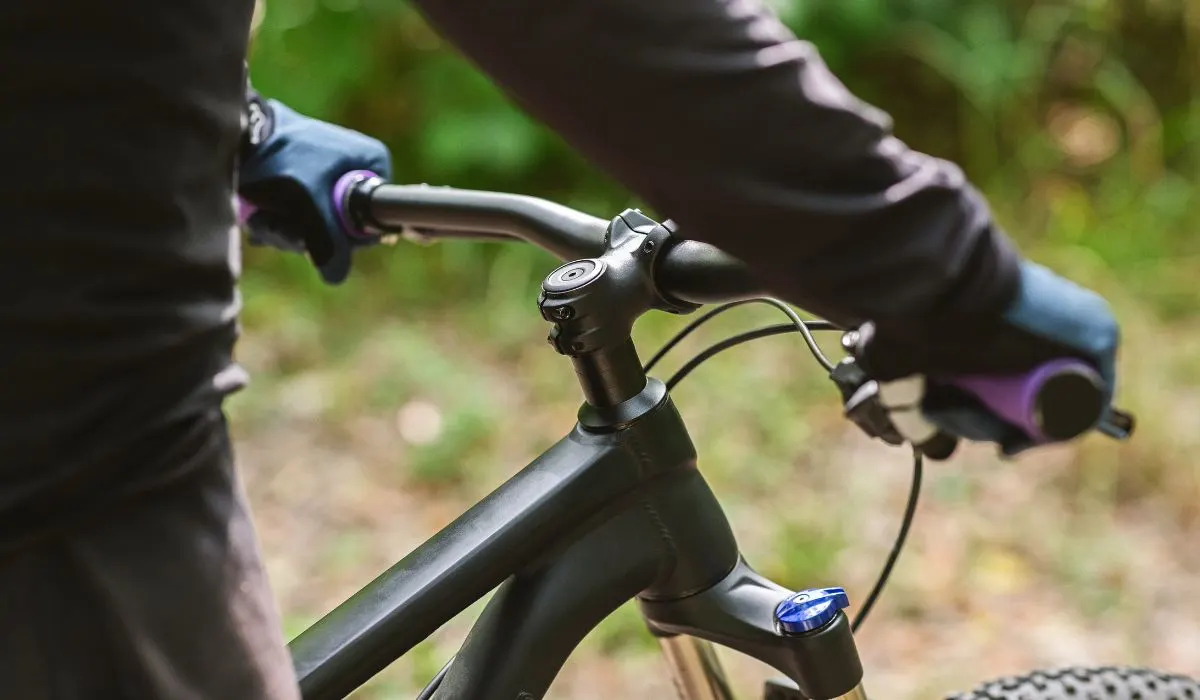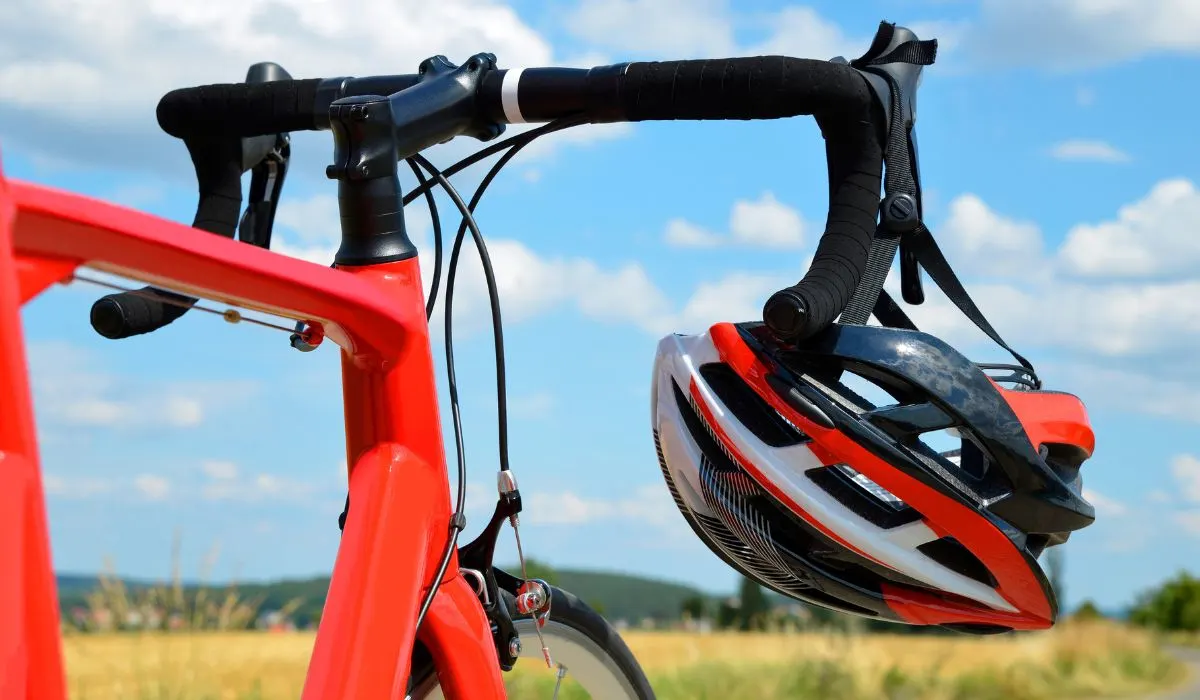
If you spend a lot of hours on your bike, you may find that it’s not the perfect fit, and your posture is put under strain. Symptoms may include backache and pain in your hands and wrists, which can take all the fun out of riding. The solution may well be to change the position of your handlebars with a stem riser or an adjustable stem – but which one is better?
The adjustable stem is the better of the two in most cases. It allows forward and backward adjustment of the handlebars and a limited amount of upward extension. In contrast, the stem riser gives additional height adjustment, which might not solve the problem.
Even if you’re an experienced rider, you might not have needed to investigate stem adjustment devices, so we’ll take a closer look at exactly what they are, how they are designed to work, and how effective they are. Both stem risers and adjustable stems have advantages and disadvantages, and it’s important to know what these are before deciding which one to buy.
Stem Riser Vs. Adjustable Stem – A Full Comparison
Stem risers and adjustable stems are used to change the position of the handlebars, so in many respects, they offer the rider an “either-or” choice. If all you have to do is lift the handlebars, does a stem riser do an adequate job? Is an adjustable stem the better option?
Fitting A Stem Riser
A stem riser (also known as a stem extender) is a hollow tube that fits over your fork’s steer tube, extending the steer tube and raising the handlebars to sit in a more upright position. Fitting is simple, with the stem riser attached by pinch bolts, which should hold it securely.
Whereas riser handlebars or a steeper angled stem can give you an additional couple of inches, a stem riser can heighten your handlebars by as much as six to eight inches.
Fitting An Adjustable Stem
The actual fitting of an adjustable stem is equally simple, as the upright part will fit directly over the fork’s steer tube and be securely bolted in the same way. An additional adjustment must be made, which involves the hinged stem. It is loosened, moved to the correct position, and then retightened to the specified torque using the correct size hex wrench.
When Is A Stem Riser A Good Option?
There are several situations where a stem riser will provide an answer to your needs:
- If you are the only person using the bike and you’re too tall for the existing handlebar position, fitting a stem riser is the ideal way to raise them.
- If you’re giving the bike to someone, possibly an older person, who needs a more upright riding position.
- If, with a limited budget, you want the least expensive way to improve the position of your handlebars.
When Is An Adjustable Stem The Better Option?
The adjustable stem doesn’t allow for the same increase in height, but it does allow the rider to move the handlebars closer or further away. It is the better option when:
- More than one person uses the bike regularly, as adjustments can be made “on the fly.” That allows sharing the bike with each rider using their preferred setting.
- If the rider feels the bike is too long or too short and is causing back, neck, or wrist pain, the adjustable stem can solve the problem without any expensive changes to the bike.
Disadvantages Of A Stem Riser
We’ve pinpointed when a stem riser is the right device to use when adjusting your handlebars. Several important things need to be considered before making your decision:
- Adding as much as six inches to the height of your handlebars will affect the handling, and your steering will be a bit slower and less precise.
- Even though the riser may be secure, there’s likely to be some flex and possible shaking over rough ground.
- By increasing the height of the stem, you are putting more strain on the existing steer tube. Depending on the material and quality of your bike, this could cause bending and damage to the tube.
- As mentioned, fitting a stem riser is simple, but once done, your handlebars are fixed in position and cannot be moved. Minor adjustments can still be made using spacers, but you need to buy the right stem riser for your requirements.

Disadvantages Of An Adjustable Stem
Having listed the benefits of an adjustable stem, here are some of the possible disadvantages:
- As we’ve mentioned, an adjustable stem allows the handlebars to be adjusted in height and angle. The handlebars move closer when the adjustable stem is adjusted higher, and vice versa – they will move away from the rider as they move downwards. These two positional shifts are not independent because the stem swivels around the upright.
- The adjusting of the stem, while it gives far more positions to choose from than the stem riser, needs to be constantly checked, as the nuts can work loose and cause the handlebars to slip out of position.
- Whereas the stem riser is a simple non-mechanical device, the adjustable stem is more complex, with a pivoting stem, costing up to double the price of a stem riser (here’s one on Amazon for reference). It’s also a little heavier, but that shouldn’t be a problem as both are typically made from aluminum alloy and weigh very little.
Stem Risers And Adjustable Stems – The Safety Factor
Stem risers and adjustable stems are usually made from an aluminum alloy and are both lightweight and durable. However, there is no doubt that they place an additional load on the steerer tube. In addition, it’s not recommended to fit either to a bike with a carbon fiber steerer because:
- The pinch bolts may damage the integrity of the carbon, especially if over-tightened.
- Carbon flexes too much, and the increased stem height acts as a stronger lever, putting more strain on the steerer and increasing the chance of it breaking.
As an add-on, the stem riser is safer as it is simply an extension of the steer tube. Risers made of carbon and adjustable stems of the same material are considered perfectly safe for use on road bikes and hybrids but are not recommended for mountain bikes.
NOTE: Some manufacturers have produced both items that they believe are tough enough to withstand off-road trails, jumping, and generally rough handling.
Stem risers are not all equal, so check the quality carefully before you buy. Some are made from thin aluminum alloy tubing and don’t have the strength to withstand the force placed on them, so they bend or work loose on the steerer.
Adjustable stems, because they have moving parts, actually tend to be more durable and better quality but are nevertheless not recommended for use on mountain bikes because they might loosen up on rough terrain.
Alternatives To Stem Risers And Adjustable Stems
If you’re suffering from back, neck, wrist, and hand pain, and you need to adjust your riding position on your mountain bike so that you can continue to ride rough trails, here are some suggestions:
- Buy a stem with a higher angle, which will raise the height of your handlebars and hopefully alleviate the problem.
- Buy riser handlebars to replace the flat bars on your mountain bike. Unfortunately, it will affect your handling, but it’s something you can adapt to. Hopefully, it will cure your pain issues.
- Buy a fork with a longer steerer – probably the most expensive option, but one that will allow you to raise the handlebars without affecting the handling characteristics of your bike.
We’re suggesting these options because many experts and bike technicians argue that you should NOT use risers or adjustable stems if you’re an aggressive mountain biker, and safety is always our concern.
The other point to consider is that an upright posture in mountain biking or trail riding makes handling rough terrain much more difficult. You would ideally only raise your handlebars enough to alleviate the stress on your body rather than making your ride comfortable.

Conclusion
Stem risers and adjustable stems play a role in adjusting your bike’s setup to suit your:
- height
- reach
- overall posture
Ideally, this would be something you would sort out with a professional before buying your bike, but that’s not always possible, and adjustments need to be made later in your biking career.
There is an extensive range of products to investigate when buying a stem riser or adjustable stem. The first decision is which one is the better option.
- If more than one person uses the bike and they have different requirements, the adjustable stem makes the most sense.
- If you’re adapting the bike to suit your needs, a stem riser is perfect – just make sure you buy the best you can afford.
You might also be interested in:

Leave a comment